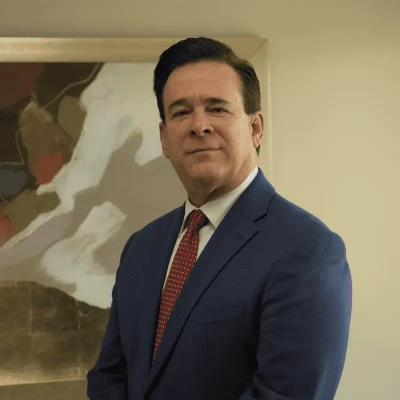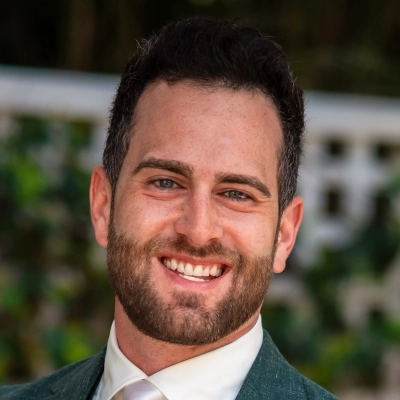12 Creative Recruitment Strategies that Lead to the Best Hires
Discover innovative approaches to finding top talent in today's competitive job market. This article explores 12 creative recruitment strategies, backed by insights from industry experts, that go beyond traditional hiring methods. From hosting interactive workshops to leveraging social media platforms, these techniques promise to revolutionize how companies attract and identify the best candidates for their teams.
- Prioritize Job Fit Over Traditional Criteria
- Attract Problem Solvers with Real Challenges
- Host Interactive Workshops to Identify Talent
- Create Long-Term University Internship Programs
- Tap into Reddit for Tech Talent
- Offer Immediate Project Autonomy to Candidates
- Use Gamification to Assess Cultural Alignment
- Conduct Collaborative Problem-Solving Events
- Reach Out to High-Performing Passive Talent
- Replace Interviews with Team Game Nights
- Sponsor Trade School Competitions for Craftsmen
- Target Professionals via Social Media Platforms
Prioritize Job Fit Over Traditional Criteria
Our most successful hire occurred when we shifted our focus from being "creative" to prioritizing fit.
Like many companies, we had previously based our hiring decisions on experience, credentials, and gut instinct for years. However, the turning point came when we began assessing candidates based on how they actually think, learn, and work with others (their job-specific competencies). This approach led us to discover the true meaning of job fit. It's the alignment between a person's abilities, motivation, and interpersonal style, and the actual demands and culture of the role.
I often reference a Harvard Business Review study, "Job Matching for Better Sales Performance," by Herbert and Jeanne Greenberg. It's one of the largest long-term studies ever conducted on hiring, following 360,000 individuals over 20 years. The research found that when people are well-matched to their roles, they're 2.5 times more productive than those who aren't. Even more striking: job fit was a stronger predictor of success than education, experience, or even training.
We've seen this proven in practice. One of our top performers today actually came from outside our industry. On paper, she wouldn't have stood out. But her assessment results showed a near-perfect alignment with the role's cognitive and behavioral demands. Within months, she was outperforming tenured peers; not because she knew our industry better, but because the job fit her naturally.
That experience reinforced what the research shows: the most effective hiring strategy isn't about finding the most experienced person, or someone with the "right" education. It's about finding the right person. When someone's natural strengths align with the work they're doing, they don't just perform better. They thrive, stay longer, and elevate the people around them.
Attract Problem Solvers with Real Challenges
One of my best hires came from an unplanned experiment. Instead of posting a traditional job description, I wrote a LinkedIn post describing a problem we were facing. I explained that we needed someone who could simplify complex marketing ideas into human stories that convert, and I ended with: "If you've done something similar, show me your best example."
The responses were nothing like traditional applications. People didn't send resumes; they sent ideas, Loom videos, mock campaigns, and even rewrites of our website copy. This approach led me to discover the person who later became one of our strongest strategists.
What made this successful wasn't luck; it was clarity and context. Traditional hiring focuses on qualifications, but this approach focuses on initiative and thought process. It naturally attracted people who think like creators, not just candidates looking for a job.
If you're considering this method, don't hide behind job titles. Describe the real challenge, invite people to solve it, and see who shows up. In my experience, the right ones always do.

Host Interactive Workshops to Identify Talent
One of my best hires came from an unconventional approach that had nothing to do with traditional job postings. Instead of relying on resumes, I hosted a small legal workshop in Miami focused on medical malpractice litigation and invited recent law graduates to attend. The event wasn't meant to recruit; it was meant to teach. But during the discussion, one participant stood out. She asked sharp, thoughtful questions about patient rights and liability thresholds that showed genuine curiosity and empathy.
After the session, I invited her to shadow the firm for a week to see how we handle personal injury and medical malpractice cases in real time. That hands-on experience revealed her natural fit with our team's mission and client-centered culture.
What made this strategy successful was that it prioritized values and communication over credentials. Traditional hiring filters often overlook those who might not "look perfect" on paper but have the right mindset and drive. Bringing her on board not only elevated our client service but also reminded me that the best talent often emerges when you create spaces for learning and collaboration, not just job interviews.
Create Long-Term University Internship Programs
Leveraging University Proximity: Our Graduate Internship Program
When DataNumen was smaller, we struggled to attract top programming talent. Our solution? A long-term internship program leveraging our location near Zhejiang University.
How It Differed:
Unlike traditional 2-3 month internships, we created a comprehensive development program where graduate students worked flexibly (just 2 days weekly, including evenings/weekends) throughout their graduate studies (about 2 years). Each intern was paired with a senior programmer for hands-on mentorship, progressing through six stages—from documentation to enterprise-level data recovery software development.
What Made It Successful:
Over two years, we trained 30+ exceptional programmers who developed critical data recovery products like DataNumen SQL Recovery and DWG Recovery.
The extended timeline let us properly evaluate talent while students gained real-world experience with enterprise architecture, worked with engineers from Microsoft and IBM, and earned competitive wages.

Tap into Reddit for Tech Talent
One of the best hires I ever made came from a post on Reddit! Normally, as a recruiter, you spend endless time on LinkedIn Recruiter, job boards, and internal ATS systems looking for candidates. But one of my most memorable and talented hires came from a simple post I made on the /r/forhire subreddit. Some of the best talent (especially tech talent) hangs out on Reddit, and if you write an interesting enough post on /r/forhire, it can be seen by hundreds of thousands of Redditors. You, of course, need to be ready for comments and PMs about the job post (and criticism about the company; Redditors love criticizing stuff), but I don't think I could have found that particular candidate by simply posting a job on Indeed or reaching out to them on LinkedIn.
Offer Immediate Project Autonomy to Candidates
Our most successful recruitment strategy involved offering candidates meaningful autonomy over projects from day one, rather than the traditional approach of gradually increasing responsibility over time. This approach attracted a developer who quickly designed a workflow automation system that saved our team dozens of hours weekly. The strategy worked because it demonstrated our trust in candidates' abilities and allowed them to immediately contribute meaningful work, creating both a compelling recruitment proposition and early value for the organization.
Use Gamification to Assess Cultural Alignment
Our most successful creative recruitment strategy has been implementing 'Cards for Culture,' a gamification approach that transforms traditional interviews into engaging conversations about our organizational values. This method differs from conventional hiring processes by creating a more relaxed atmosphere where candidates can authentically demonstrate their thinking and cultural alignment rather than just responding to standard questions. The success of this approach lies in how it gives candidates a genuine feel for our company culture while allowing our team to observe how potential hires problem-solve and interact in real-time scenarios.

Conduct Collaborative Problem-Solving Events
Our most successful recruitment strategy was hosting interactive events that allowed candidates to work alongside our team on real business challenges. This approach differed from traditional interviews by creating an environment where we could assess skills in action while candidates could experience our company culture firsthand. The events gave us insight into how candidates think, solve problems, and collaborate with potential teammates - qualities that are difficult to gauge in standard interviews. This creative method significantly improved our ability to identify candidates who were both technically qualified and culturally aligned with our organization.

Reach Out to High-Performing Passive Talent
One of the key recruitment strategies that has worked really well for us is reaching out to what I call passive talent - people who aren't actively looking for a job but may be open to the right opportunity.
Typically, these individuals haven't yet made up their minds about moving. It takes effort for them to update their resume, prepare for interviews, and go through the usual job-search process. So, they often stay where they are unless something truly compelling comes along.
What we do is identify such high-performing professionals - people who have already demonstrated excellence - and reach out to them directly when we believe they'd be a great fit for our organization. We make the conversation about opportunity, not vacancy.
This approach is quite different from traditional hiring, where you post a job and wait for applicants. In that scenario, you often get a large number of candidates who are simply hopping from one organization to another. While that can fill roles quickly, it doesn't always ensure long-term fit or commitment.
By contrast, reaching out to passive talent takes more time, but it yields people who are genuinely aligned with the organization's purpose, culture, and goals. These hires tend to be far more stable and impactful in the long run, and that's what ultimately makes the approach successful.

Replace Interviews with Team Game Nights
One of my best hires came from inviting candidates to join a casual game night with our team instead of a formal interview. It gave us a chance to see how they problem-solved, collaborated, and handled pressure in a fun setting. It was very different from traditional methods but revealed far more about cultural fit.
Sponsor Trade School Competitions for Craftsmen
Creative recruitment for us means finding the craftsmen whom others overlook. My best hire didn't come from an online job board or a corporate recruiter; he came from a community trade school's welding competition.
Our traditional hiring method was placing ads asking for "X years of roofing experience," which brought in mostly burned-out guys. This new approach was fundamentally different because it focused on finding candidates with proven hands-on precision and dedication to material integrity, even if it wasn't roofing-specific.
The strategy was simple: I sponsored the local trade school's annual competition, which wasn't about speed, but about the quality of the final weld. I didn't care about the welding; I cared about the process. I was looking for the student who showed the most patience, the cleanest workspace, and the highest attention to the structural detail of the hidden joint.
My best hire was the student who won the competition. I hired him not as a roofer, but as a hands-on Metal Fabrication and Flashing Apprentice. He had zero roofing experience, but he had a world-class commitment to material integrity. He quickly became our top specialist for complex copper and metal roof installations, where precision is everything.
The approach was successful because I looked past the job title and focused on the core hands-on values. The best hire is a person who is committed to a simple, hands-on solution that prioritizes craftsmanship and structural integrity above all else.
Target Professionals via Social Media Platforms
Our most successful recruitment strategy was shifting from traditional job boards to a targeted social media approach on LinkedIn and Facebook when our standard channels weren't producing enough qualified candidates. This social-first approach allowed us to showcase our company culture authentically while simultaneously targeting professionals with very specific skill sets we needed. The results were impressive - not only did we receive more applications overall, but the quality of candidates improved significantly as we reached professionals who weren't actively searching on conventional job sites.








